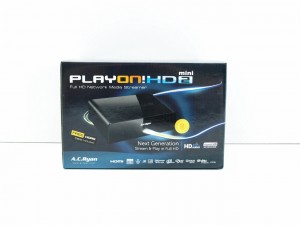 Two weeks ago I bought a PlayonHD put together by A.C. Ryan. When I bought the box I was not aware of the fact that I bought a little Unix box. It turns out that you can telnet to the box and have a complete Linux system at your hands: it is called BusyBox.
Two weeks ago I bought a PlayonHD put together by A.C. Ryan. When I bought the box I was not aware of the fact that I bought a little Unix box. It turns out that you can telnet to the box and have a complete Linux system at your hands: it is called BusyBox.
Knowing that, I was wondering, if it was possible to backup (part of) the internal harddrive (2TB) periodical to a USB connected harddrive.
I knew this should be possible with the crond deamon; this tool takes care for executing a command every given time.
Out of the box my Playonhd Busybox version did not have a crond deamon compiled in. Luckily I could find one on the internet here (use save as and copy onto your PlayonHD).
For a list of commands available within the BusyBox you use take a look here.
The crond file should be created in
/tmp/spool/cron/crontabs/[uname]
uname is probably root.
Example contents (every minute a echo to the specified file; take a look here to examine the crontab file format):
* * * * * echo “some text” >> /var/crondtest_bdej
Start the crond daemon with:
./busybox1.16.1 crond
(execute this in the diretcory where your new busybox bin is saved.
Now instead of this simple echo comand specify your copy commands here and voila; you can automatically backup your data to a USB drive.
To share your USB drive on the network edit your SAMBA configuration file; this file is stored at /usr/local/etc/package/samba/lib and is called smb.conf
Add the following to the end of the configuration file
[USB1]
path=/tmp/usbmounts/sdb1
hide dot files=yes
hide files=/.*/lost+found/
guest ok=yes
writable=yes
force create mode=0775
force directory mode=0775
The USB drive is visible on the network with the name USB1.



